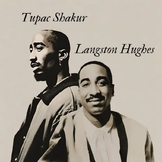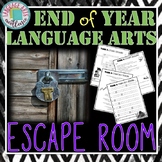122 results
8th grade environment centers for Microsoft Word
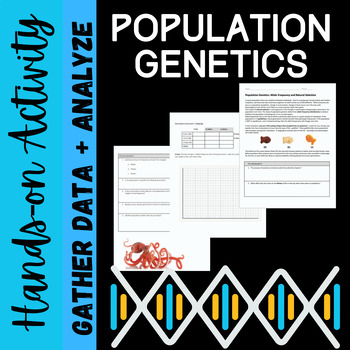
Population Genetics: Allele Frequency and Natural Selection
This activity asks students to explore what happens to allele frequency in a population of goldfish when environmental pressures (the introduction of a predatory octopus!) are placed on them. Students will be asked to make predictions, interpret data and allele frequencies, create a graph of the allele distribution, and (most importantly) eat goldfish. I have uploaded this in a .docx format so you can modify and differentiate for your classroom and students' needs. I recommend going through t
Subjects:
Grades:
8th - 12th
Types:
NGSS:
HS-LS4-3
, HS-LS4-4
, HS-LS4-5
Also included in: Natural Selection and Evolution Bundle

Make a Cloud in a Bottle Lab!
This lab allows students to make their OWN cloud in a bottle. The lab tells them how to change the pressure in the bottle which will result in cloud formation inside the bottle if the lab procedure is followed correctly!
The lab includes questions that they complete while they do the lab.
There is an attached completed answer sheet for the lab as well!
Subjects:
Grades:
6th - 10th
Types:

Plant Sort: Flowering & Non-Flowering
1. Laminate and cut the cards above (first 10 are non-flowering, second 10 are flowering)2. Glue sorting mat onto front of envelope/file folder3. Decide which way to play! a. Whole Group: give each student a card and spread out around room, then say ‘go’ and have students find pairs (2 students both having flowering OR both having non-flowering plant) b. Partners: Matching Gam-: flip cards upside down, take turns selecting 2,
Subjects:
Grades:
2nd - 12th
Types:

Food Chain or Food Web Word Search or Wordsearch
30 words scattered in all directions including diagonal and backwards. Ecosystem, decomposers, tertiary, primary, secondary, prey, producers, energy pyramid, autotrophs, eagle, carnivore, consumers, herbivore, photosynthesis, scavengers, trophic levels, food web etc....
Subjects:
Grades:
3rd - 12th
Types:
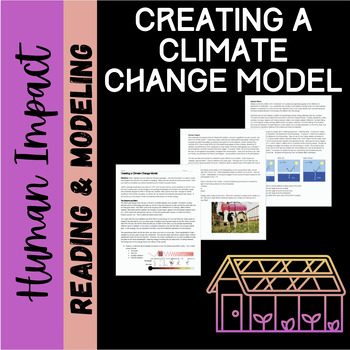
Creating a Climate Change Model
This assignment asks students to read, highlight and annotate passages about the greenhouse effect, the albedo effect, and human impact on the climate. As they read, students add information to their model. Once their draft model is completed, they will transfer it to a poster board. NGSS HS-LS2-7.Design, evaluate, and refine a solution for reducing the impacts of human activities on the environment and biodiversity.HS-ESS3-5. Analyze geoscience data and the results from global climate models
Subjects:
Grades:
8th - 12th
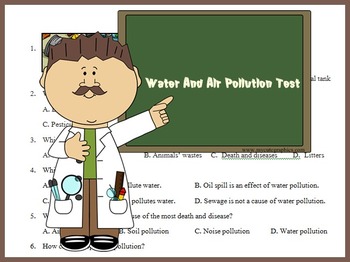
Water and Air Pollution Test
There are 10 items of water pollution = 1 page
There are 10 items of air pollution = 1 page
The test consist of Vocabulary, grammar, causes, effects and conservation.
This Presentation is related to:
1. Light Energy Test/Worksheet
2. Light Energy Reading Scinece
3. Energy PowerPoint Presentation
4. Energy Test/worksheet
5.Energy Test
6. Heat Energy Powerpoint Presentation
7. Heat Energy Reading Science
8. Earth Day Reading Science
9. Recycle Worksheet G.3-6
10. Martin Luther King,
Grades:
3rd - 8th
Types:
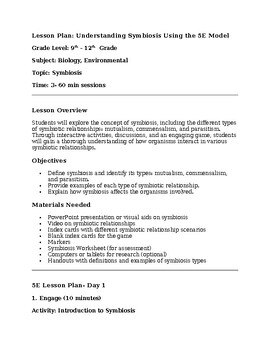
Science Environmental Biology Symbiosis 3 day Lesson Plan 5E Lesson, Activity
Attention Teachers! Engage Your Students with this Exciting Symbiosis Unit Lesson Plan!Are you looking for an innovative and interactive way to teach symbiosis to your students? Look no further! This comprehensive Symbiosis 3 Day Unit Lesson Plan is designed to captivate students' interest and foster a deep understanding of symbiotic relationships in the natural world.Why Choose This Symbiosis Unit Lesson Plan?Engaging Activities: this lesson plan incorporates hands-on activities, discussions, a
Subjects:
Grades:
8th - 12th
Types:
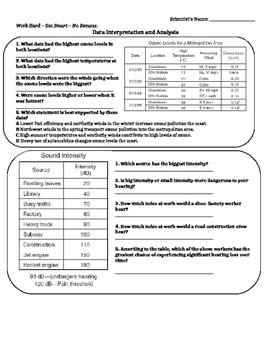
Data Practice: Interpreting and Creating
This packet gives students great practice in analyzing and interpreting data tables, charts, and graphs, as well as creating them. The practice is rigorous, and builds a solid foundation of data interpretation, analyses, and graphing skills. These are critical skill sets for students to have in life - data literacy is huge in society, politics, economic, science and more! They are also important skills for students to have on all EoG tests.
Subjects:
Grades:
5th - 8th
Types:

Winds and Convection: Explain the Diagram
This activity includes a series of scientific visuals and diagrams about vocabulary and concepts regarding convection and winds: Air Pressure, Convection, Global Winds, Local Winds, Land Breezes, Sea Breezes, and the Jet Stream. The diagrams prompt students for vocabulary, explanations and questions. Having students explain the diagrams is a creative way to both building conceptual understanding and/or assessing understanding. The visuals are more engaging for students than basic vocabulary a
Subjects:
Grades:
5th - 9th
Types:
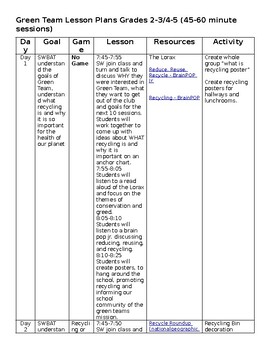
Recycling Club/ Green Team: Lesson Plans, Activities and Resources
Take the hassle out of planning! Recycling Club/Green Team lesson plans, activities and resources for a 10-week cycle!
Subjects:
Grades:
K - 8th
Types:

Adapted Reading-Animals and the Layers of the Rainforest
This product that you are about to download is designed for Special Education students who are autistic, or have a very difficult time reading. This product includes pictures to various important words throughout the reading. This will help students to visualize the information that they are reading. An activity that I will seek to add is to have my students identify the animals that can be found in each layer of the rainforest using a t-chart or some form of graphic organizer.
UPDATE: The gra
Grades:
PreK - 11th
Types:

Micro Ecosystems Lab (Ecosystem in a Bottle)
Have you ever grown an ecosystem in a bottle? Students will plant an ecosystem in a beaker or jar, and investigate how different chemicals or variables affect the environment. This is an excellent project for studying sustainability or ecosystems, and can easily be modified with materials you have at hand.Students will:- learn about variables and control- build and observe their own ecosystem- collect and graph data from the experiment- answer analysis questionsMaterials needed:250 mL beaker or
Subjects:
Grades:
5th - 10th
Types:
Also included in: Biology Lab Bundle
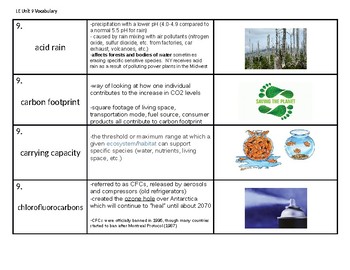
NYS Biology or Living Environment "Human Impact" Vocabulary Strips
Print-ready "human impact" unit vocabulary strips for classroom use! Words are displayed on long strips with definitions, examples, memory tips, and paired images/graphics. What better way to practice studying with a peer! All other units for introductory biology or Living Environment (NY) are available.
Subjects:
Grades:
8th - 12th
Types:
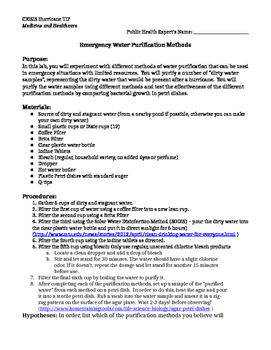
Water Filtration Lab
In this hands-on investigating, students experiment with different emergency water filtration techniques. The activity should be preceded and/or followed by discussions about worldwide water contamination and the shrinking availability of fresh water. This activity provides students with a sense of real meaningful work and responsibility in working towards solutions to real world issues.
Subjects:
Grades:
5th - 9th
Types:
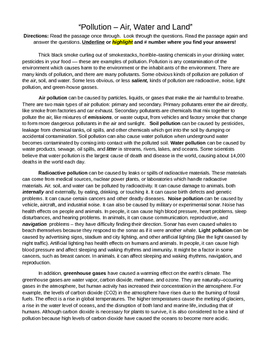
Pollution Reading Comprehension
This reading comprehension is a great overview, introduction, review or reinforcer about pollution - human and natural sources. The article is written in friendly and engaging language and includes a diagram. The article is about a page and includes standards-aligned comprehension and analyses questions. The article can be used for project research, literacy groups, individual DEAR or homework reinforcement.
Subjects:
Grades:
5th - 9th

Science Literacy: Can Eating Less Meat Reduce Climate Change?
Students often fail to make the connection between the science they learn in the classroom, and how it is be applied in the real world. This "Article of the Week" series follows Dave Stuarts's format and is designed to bridge that gap using real articles from reliable sources.The assignment asks students to perform a close reading, annotations, and to use evidence from the article to support a claim. It also asks students to reflect - giving them a chance to interject their own thoughts and opin
Subjects:
Grades:
8th - 12th
Also included in: Ecology, Populations and Biodiversity Bundle

Environmental Issues in Latin America
This packet addresses the environmental issues prevalent in Latin America with an emphasis on identifying cause/effect/solution. It provides informational text on air pollution in Mexico City, Deforestation of the Amazon Rain Forest, and oil-related pollution in Venezuela. Students will show comprehension by answering multiple choice questions and open-ended response as well as completing cause/effect/solution diagrams.
Grades:
5th - 8th
Types:
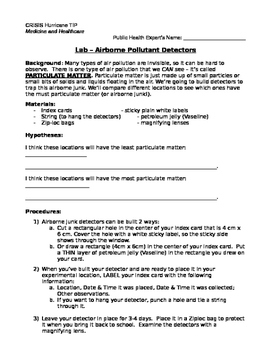
Pollution Detectors Lab
In this hands-on investigation, students build pollution detectors to collect different types of particulate matter. Students can choose places around the school, community and their homes to place the detectors in order to analyze the pollution in these different places. This is an engaging and purposeful activity for students to analyze local issues of pollution and connect these to larger global air quality issues.
Subjects:
Grades:
5th - 10th
Types:
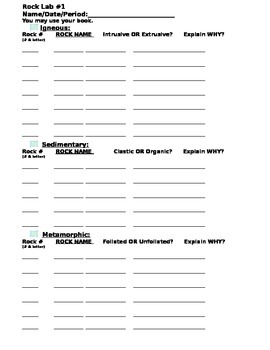
Rock Lab (Basic Identification & Classification)
Rocks are set up in stations around the room with numbers and letters for example, 1B - granite
Students will go around from rock to rock for about one minute or so for each rock.
They record the number & letter of the rock (under the correct classification: igneous, sedimentary or metamorphic), then they identify if it is intrusive/extrusive, clastic/organic, foliated or unfoliated and EXPLAIN WHY.
This is one of the first labs to work on identification after students have practiced
Subjects:
Grades:
6th - 8th
Types:

Bird Beak Adaptations Lab
A hands on way to discover the adaptations of various bird beak types. Students love this game of picking up beans, noodles and other materials using forks, chop sticks and tweezers.This one is a winner! Kids love it!
Subjects:
Grades:
1st - 12th
Types:

Earth's Spheres & Sphere Interactions
Formative assessment or warm up sheets for Earth's spheres and their interactions.
Subjects:
Grades:
8th - 10th

Skittlefish Natural Selection Lab
A simple lab that uses skittles, called "skittlefish", and colored paper to illustrate the concepts of variation, adaptations, and natural selection. Students "hunt" the skittlefish and drive natural selection, causing the species to change. Students can see for themselves that no individual skittlefish changes colors, yet the species as a whole changes color. Goes well with my free Speciation google slides presentation - I have used both in one class period.
Subjects:
Grades:
6th - 12th
Types:

Create a hurricane Project
A combination of resources for teaching about hurricanes.
Includes:
1. Instructional videos about categories, how they're formed, how to prepare for a hurricane, how houses are built to withstand hurricane fprce winds etc
2. A documentary about Hurricane Katrina
3. A project that allows students to apply concepts from the videos to design and construct hurricane-proof houses with paper, straws and tape (using math concepts of area & volume). Students test their hurricane-proof houses with
Subjects:
Grades:
6th - 12th
Types:
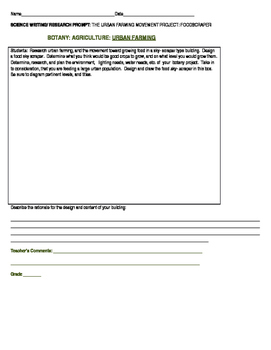
SCIENCE WRITING/ RESEARCH PROJECT/CONTEST: URBAN FARMING
Teachers: This project is good for a botany contest. See what the students design and create for the future of urban agriculture!
The Earth's population is large, and growing and science will lead the way on creativity, and expanding the output of farm production!
Have a great time as students talk about their designs, and hang them on a bulletin board. Perhaps, a few prizes might be exciting.
Subjects:
Grades:
4th - 12th, Higher Education
Showing 1-24 of 122 results





